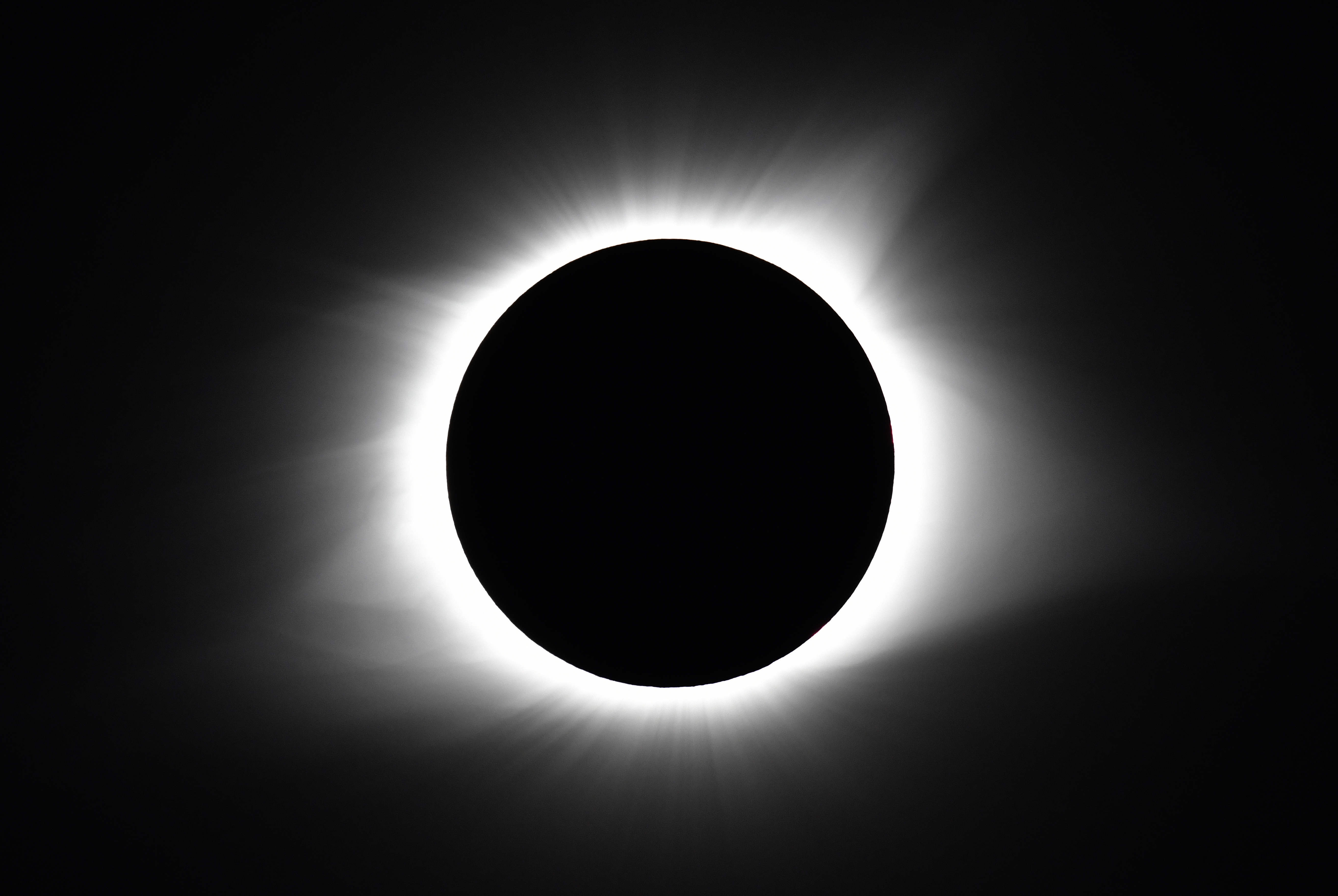What happens to solar power when the moon blocks the sun?

The moon covers the sun during a total solar eclipse in August 2017 in Cerulean, Kentucky. | Timothy D. Easley/AP
By Jason Plautz
a report from NREL. That event did not result in any major U.S. power outages.
But the grid has changed significantly since then, with fossil fuel plants retiring and being replaced in many cases with wind and solar.
According to the U.S. Energy Information Administration, solar generation in the U.S. has more than tripled since 2017 and now accounts for more than 4 percent of the country’s total electricity generation. The share of solar and wind is only expected to grow in future years.
That means sun-covering events will have an increasingly significant impact on the nation’s electricity supply. The eclipse also offers grid planners a chance to see how the rapid decline and subsequent ramp up in sunlight impacts congestion on transmission lines and affects the balance of supply and demand on the grid.
A partial solar eclipse last October that covered parts of the Western U.S. offered a test run of sorts. In a December report analyzing the grid impacts of that eclipse, the California Independent System Operator said it was able to manage a nearly 60 percent drop in solar generation during the event by curtailing some solar during the ramp up, importing more energy and ramping up battery storage and other resources.
The event also showed that the grid operator’s Western real-time power market “proved to be an effective mechanism” to manage the impacts. California was able to draw in power from neighboring states less affected by the eclipse when the sun was most blocked, showing the benefits of a broader footprint in exceptional events.
Grid effects
Astronomers can predict eclipse events hundreds of years into the future with pinpoint accuracy. NASA says the next total solar eclipse visible from the U.S. won’t be until 2044, with totality only visible in Montana and North Dakota.
That means grid planners have had plenty of time to prepare for the celestial event, even though forecasting continues until the final hours and minutes to get a sense of cloud cover and weather conditions. A cloudy day means that there will be less solar generation before the sun gets blocked, meaning there will be less of a decline for operators to have to manage.
“We recognize this is the kind of event we need to have a good handle on,” said Tim Duffy, manager of demand forecasting and analysis with the New York Independent System Operator. “We have an excellent handle on the timing, but one of the complexities is the extent to which there’s cloud cover. A day with more significant cloud cover, even if there’s some solar available to us, will change the impact.”
The New York ISO is one of several grid operators who have parts of their territory under the path of totality. The Electric Reliability Council of Texas (ERCOT), which manages a region that handles about 90 percent of the state’s electricity demand. The total solar eclipse will cut through a swath of the state and cover major cities including San Antonio, Austin, Dallas and Fort Worth.
In a presentation last month, ERCOT analysts said the eclipse could reduce solar generation to about 7.6 percent of its maximum clear sky output across the grid operator’s territory, which has topped 18,000 MW in recent weeks. In a statement, ERCOT said it does not expect any grid reliability concerns and has not issued any guidance for conservation or reduced usage.
Southwest Power Pool, which covers parts of more than a dozen states in the central U.S., said a majority of its territory will see between 50 and 75 percent eclipse coverage, with some areas experiencing a total eclipse. The operator said it expects the total net impact of the eclipse on utility-scale and rooftop solar to be less than 1,000 MW — “ample generating capacity provided by other resources … to make up for this loss,” according to spokesperson Derek Wingfield.
The Midcontinent Independent System Operator, whose region covers at least part of 15 states, says it could see solar generation drop from nearly 5,000 MW to under 1,000 MW in clear sky conditions during Monday’s eclipse.
PJM, the grid operator with a foothold in 13 states and the District of Columbia, said it anticipates losing at least 80 to 85 percent of production from its 8,200 MW of grid-connected solar. The operator said it will dispatch generation “as needed to respond to solar power losses,” including potential reserve resources.
The New York ISO predicts that as the path of totality goes over the northern part of the state, total solar generation could drop by 3,110 MW on a clear day, with sufficient resources to accommodate the drop, the ISO said.
ISO New England said that on a clear day, approximately 6,000 MW of solar power could go offline during the eclipse, representing a 92 percent loss of overall solar generation.
On a cloudy day, however, the loss would be much smaller because solar production would already be diminished. Alternative power producers — including batteries, pumped storage or natural gas — will be able to step in, said spokesperson Mary Cate Colapietro.
Source: politico.com
